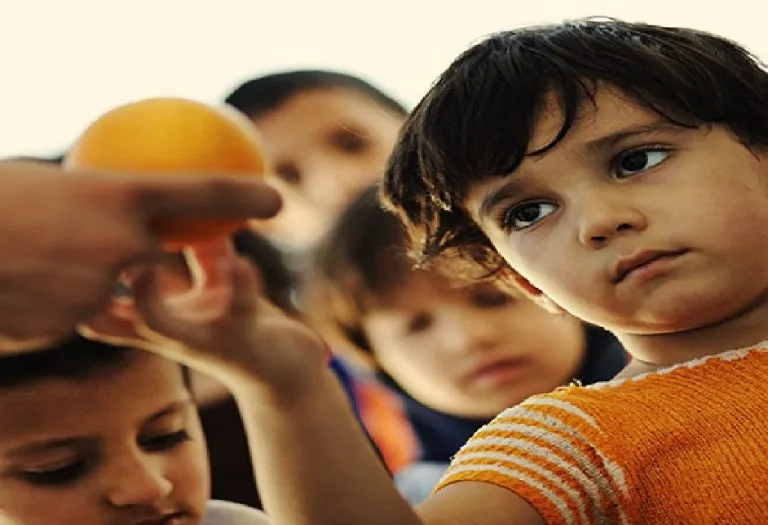Vitamin A for Kids – Benefits and Food Sources
Children’s young age is synonymous with a lot of metabolic activity that needs to be fuelled with the right nutrition for them. All of these come together to ensure the rapid and appropriate development of the body as well as the various internal organs and functions needed to lead a good life. Vitamin A is one of those elements that many parents take good care of and ensure their child has the necessary amounts of it. But where can you find it? Packed in colourful fruits, leafy greens, dairy, and even fish, Vitamin A comes in animal- and plant-based sources, making it easy to incorporate into meals. Is there something as too much vitamin A for kids? Let’s find out.
Benefits of Vitamin A for Children
The benefits of vitamin A are tremendous since it affects a lot of areas of the child’s development. Vitamin A acts by (1) (2) (3) (4) (5):
- Boosting and strengthening the immune system of a developing child.
- Assisting the growth of various membranes and tissues in the body and keeping them healthy.
- Promoting sharp eyesight and a strong vision by playing an important part in the growth of the retina (Vitamin A is known as retinol).
- Rapidly repairing processes within the body and outside, helping tissue regeneration and healing of wounds actively.
- Affecting the growth of bones, teeth, and various tissues, to ensure proper physical and structural development.
- Vitamin A aids in the formation of red blood cells, supporting proper oxygen transport and reducing the risk of anaemia.
How Much Vitamin A Should a Child Consume Daily?
The recommended Vitamin A requirements for children vary for each one. However, there are certain optimum levels that are decided for children based on their age (1) (2) (3).
| AGE | RDA (BOYS) | RDA (GIRLS) |
| 4 – 8 years | 400 mcg | 400 mcg |
| 9 – 13 years | 600 mcg | 600 mcg |
| 14 – 18 years | 900 mcg | 700 mcg |
Vitamin A Foods for Kids
When it comes to vitamins, Vitamin A is one of those that can be easily found in a variety of foods since most of them are rich in it. These are (3) (4) (5):
- Carrots
- Sweet potatoes
- Pumpkin
- Mangoes
- Cantaloupe
- Apricots
- Spinach
- Kale
- Collard greens
Animal sources of vitamin A are:
- Milk and Dairy (cheese, yogurt, butter)
- Egg Yolks
- Liver
- Fatty fish such as tuna and herring
Can Kids Take Vitamin A Supplements?
Generally, a well-balanced diet should provide your kid with the necessary proportion of vitamin A that is essential for his development. In some cases, supplements could also be opted for to support the levels of vitamin A (6).
- Vitamin A supplements are usually available in the form of tablets that are supposed to be chewed. Child-friendly supplements usually come in a variety of flavours that suit young kids.
- Refer to the information on the tablet to know the amount of vitamin A it contains. Make sure the dosage is precisely geared depending on the need of your child and his age.
- It is best to get your doctor’s agreement on the supplement and its dosage as well.
Is Excess Intake of Vitamin A Harmful for Children?
Just because a particular vitamin is healthy, does not mean you can have endless amounts of it without harm. Most of the vitamin A that is consumed from food sources is rarely toxic since the body ends up storing the excessive vitamin. However, this exact function can be dangerous if vitamin A proportions enter an unsafe region, resulting in (4) (7):
- A feeling of nausea that seems to stem from the stomach
- Repetitive vomiting and bouts of diarrhoea
- Severe damage to the liver
- Reduction in bone density which could cause osteoporosis
- Rare cases where vitamin consumption becomes fatal
What Is Considered Extreme Intake of Vitamin A Intake?
Although the optimum levels for each kid as per his age have been mentioned above, there is a threshold above which vitamin A can be harmful to a child.
In kids less than 3 years old, this should not cross 600 mcg. For children that are between 4 years old to 8 years old, the safety threshold for them is around 900 mcg. Giving any kind of vitamin A supplement that pushes the levels beyond the safety limit can be quite harmful (7).
What if a Child has Vitamin A Deficiency?
Although in today’s age, the deficiency of vitamin A is a rarity, but there are cases when such scenarios have been observed, especially in the absence of the right diet (3) (4).
- An absence of variety in the food items being consumed could result in a potential deficiency.
- Vitamin A deficiency can cause problems with eyesight and even unhealthy skin.
- The corrective measures required in such cases is to quickly resort to supplements and get the diet back on track.
FAQs
1. How can I encourage my child to eat more Vitamin A-rich foods?
Make food fun! Try colourful smoothies, veggie-packed pasta sauces, or homemade sweet potato fries. Getting creative with meals can help picky eaters enjoy Vitamin A-rich foods without fuss.
2. Do kids need more Vitamin A during winter?
Yes! During colder months, kids are more prone to infections. Since Vitamin A strengthens immunity, including Vitamin A-rich foods can help keep colds and flu at bay.
Vitamin A for toddlers, infants, and children of all ages brings tons of benefits but only when consumed in the amounts as deemed optimum and safe for each kid. Development and healthy growth are key for all children and ensuring that, too, doesn’t go overboard are where parents need to be extra careful.
References/Resources:
2. National Institutes of Health – Vitamin A and Carotenoids
3. Harvard T. H. Chan School of Public Health – Vitamin A
4. Icahn School of Medicine at Mount Sinai – Vitamin A
5. PubMed Central – What is vitamin A and why do we need it?
6. Cleveland Clinic – Vitamin A Capsules or Tablets
7. Cleveland Clinic – Vitamin A Toxicity: How Much Vitamin A Is Too Much?
Also Read:
Vitamin B for Kids
Vitamin C for Kids
Vitamin D for Children
Gummy Vitamins for Children
Was This Article Helpful?
Parenting is a huge responsibility, for you as a caregiver, but also for us as a parenting content platform. We understand that and take our responsibility of creating credible content seriously. FirstCry Parenting articles are written and published only after extensive research using factually sound references to deliver quality content that is accurate, validated by experts, and completely reliable. To understand how we go about creating content that is credible, read our editorial policy here.























